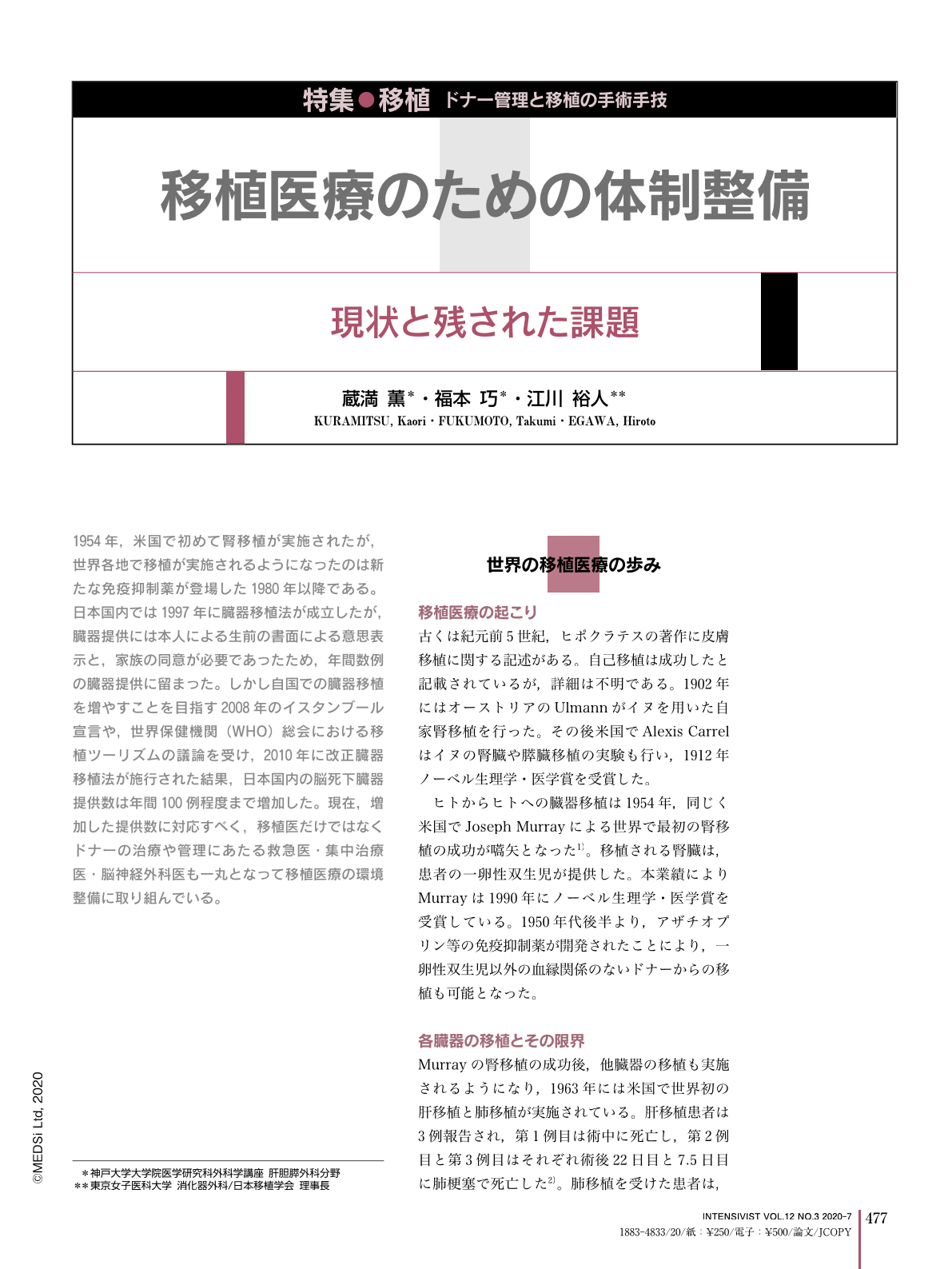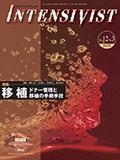Japanese
English
- 有料閲覧
- Abstract 文献概要
- 1ページ目 Look Inside
- 参考文献 Reference
1954年,米国で初めて腎移植が実施されたが,世界各地で移植が実施されるようになったのは新たな免疫抑制薬が登場した1980年以降である。日本国内では1997年に臓器移植法が成立したが,臓器提供には本人による生前の書面による意思表示と,家族の同意が必要であったため,年間数例の臓器提供に留まった。しかし自国での臓器移植を増やすことを目指す2008年のイスタンブール宣言や,世界保健機関(WHO)総会における移植ツーリズムの議論を受け,2010年に改正臓器移植法が施行された結果,日本国内の脳死下臓器提供数は年間100例程度まで増加した。現在,増加した提供数に対応すべく,移植医だけではなくドナーの治療や管理にあたる救急医・集中治療医・脳神経外科医も一丸となって移植医療の環境整備に取り組んでいる。
The first human kidney transplantation was performed in 1954. However, transplantation developed after the introduction of novel immunosuppressant in 1980. In Japan, transplant-law was established in 1997, but the number of donors were limited because donation must be performed under the condition that the patient consent was confirmed as a living will and family member does not disagree. Around the world, to address the urgent and growing problems of organ sales, transplant trafficking in organ donors in the context of the global shortage of organs, a Summit meeting of more than
150 representatives was held in Istanbul in 2008. To respond to the need to increase deceased donation, it was declared that governments, in collaboration with health care institutions, should take appropriate actions to increase deceased organ donation. Hence in 2010, transplant-law was revised, and enabled the donation based on the consent of family member. Recently the number of donors is around 100 per a year. As the number of donors increased, transplant surgeons, as well as emergency doctors, intensive care doctors, neurosurgeons, strive to improve the surround settings of donor treatment and donation surgery.

Copyright © 2020, MEDICAL SCIENCES INTERNATIONAL, LTD. All rights reserved.


